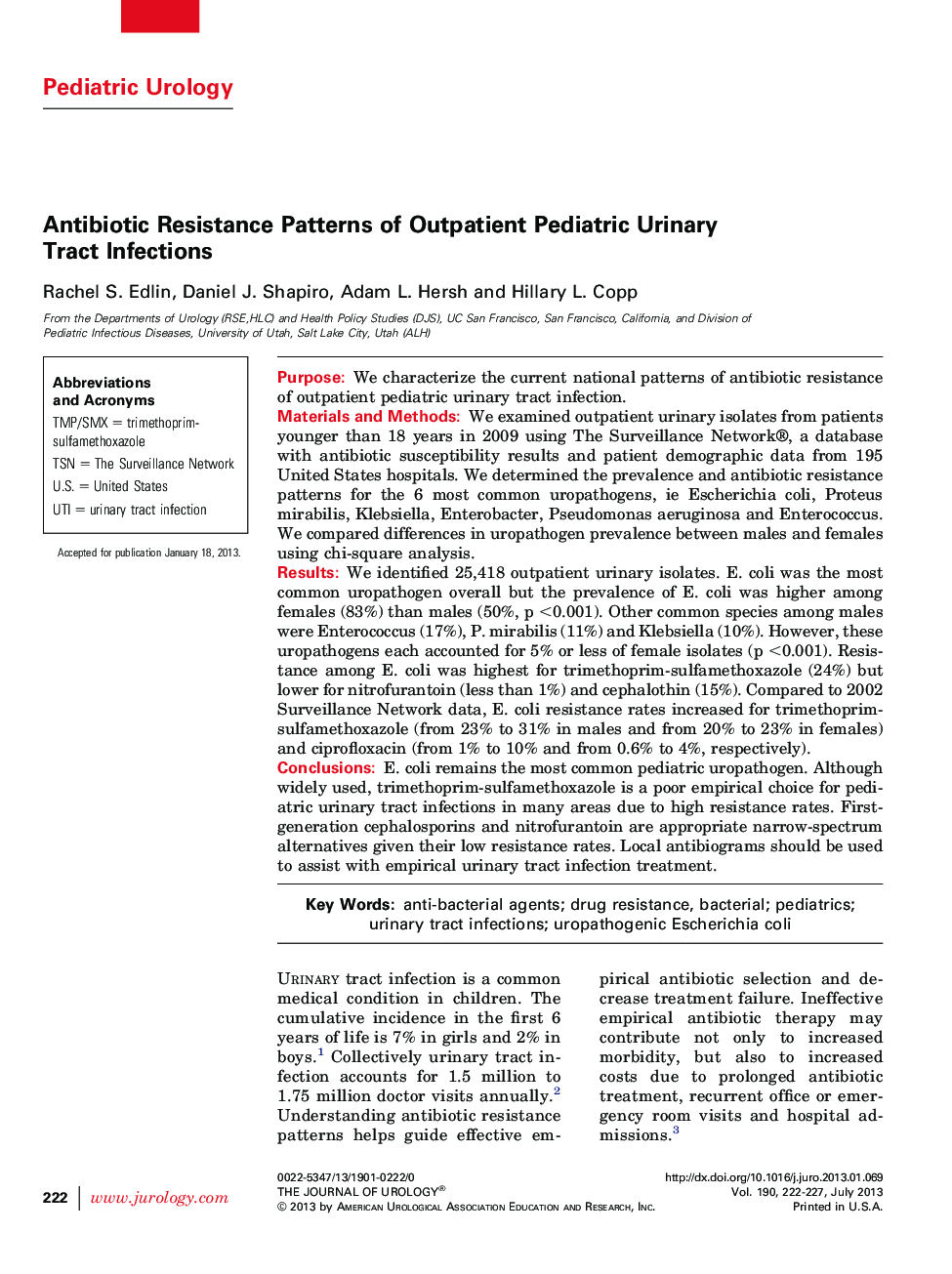| کد مقاله | کد نشریه | سال انتشار | مقاله انگلیسی | نسخه تمام متن |
|---|---|---|---|---|
| 3866292 | 1598917 | 2013 | 6 صفحه PDF | دانلود رایگان |

PurposeWe characterize the current national patterns of antibiotic resistance of outpatient pediatric urinary tract infection.Materials and MethodsWe examined outpatient urinary isolates from patients younger than 18 years in 2009 using The Surveillance Network®, a database with antibiotic susceptibility results and patient demographic data from 195 United States hospitals. We determined the prevalence and antibiotic resistance patterns for the 6 most common uropathogens, ie Escherichia coli, Proteus mirabilis, Klebsiella, Enterobacter, Pseudomonas aeruginosa and Enterococcus. We compared differences in uropathogen prevalence between males and females using chi-square analysis.ResultsWe identified 25,418 outpatient urinary isolates. E. coli was the most common uropathogen overall but the prevalence of E. coli was higher among females (83%) than males (50%, p <0.001). Other common species among males were Enterococcus (17%), P. mirabilis (11%) and Klebsiella (10%). However, these uropathogens each accounted for 5% or less of female isolates (p <0.001). Resistance among E. coli was highest for trimethoprim-sulfamethoxazole (24%) but lower for nitrofurantoin (less than 1%) and cephalothin (15%). Compared to 2002 Surveillance Network data, E. coli resistance rates increased for trimethoprim-sulfamethoxazole (from 23% to 31% in males and from 20% to 23% in females) and ciprofloxacin (from 1% to 10% and from 0.6% to 4%, respectively).ConclusionsE. coli remains the most common pediatric uropathogen. Although widely used, trimethoprim-sulfamethoxazole is a poor empirical choice for pediatric urinary tract infections in many areas due to high resistance rates. First-generation cephalosporins and nitrofurantoin are appropriate narrow-spectrum alternatives given their low resistance rates. Local antibiograms should be used to assist with empirical urinary tract infection treatment.
Journal: The Journal of Urology - Volume 190, Issue 1, July 2013, Pages 222–227